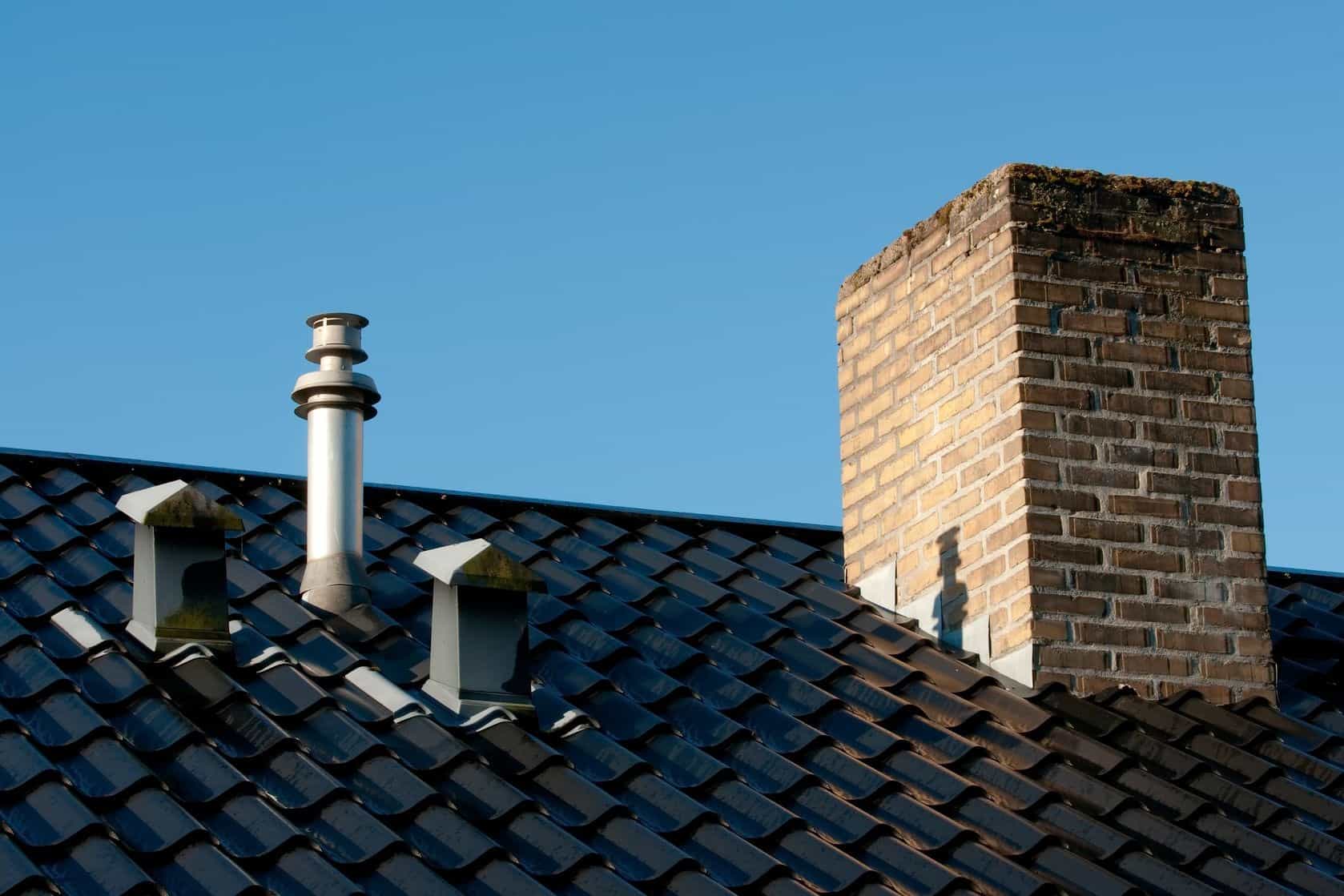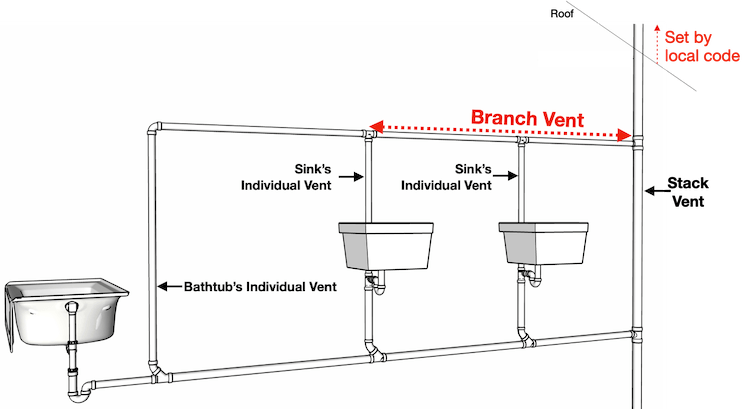Maintaining Correct Ventilation in Your Plumbing System: Why
Maintaining Correct Ventilation in Your Plumbing System: Why
Blog Article
Listed here down the page you can discover a good deal of worthwhile details concerning What Is a Plumbing Vent and Why Is It Important.

Proper ventilation in pipes systems is typically forgotten, yet it is essential for maintaining the performance and safety and security of your home's plumbing. Ventilation aids manage atmospheric pressure, protect against the accumulation of hazardous gases, and ensure the reliable elimination of waste. In this overview, we will check out the importance of correct pipes air flow, exactly how it works, and the benefits it brings to your plumbing system.
Comprehending Ventilation in Plumbing
Ventilation in plumbing describes the network of pipes that enable air to flow with the water drainage system. These vents serve several functions, including regulating air pressure within the pipes, protecting against drain gases from entering the home, and helping in the smooth flow of wastewater.
How Air Flow Functions in Pipes Equipments
Atmospheric Pressure Regulation
Proper ventilation maintains well balanced air pressure within the pipes system. When water flows through pipes, it displaces air. Without sufficient ventilation, this displacement can develop negative pressure, resulting in slow down drains or siphoning of water from traps, which can cause undesirable odors to permeate into the home.
Stopping Sewer Gas Build-up
One of one of the most vital functions of pipes vents is to avoid sewage system gases, such as methane and hydrogen sulfide, from building up within the home. These gases can position serious wellness risks and are highly combustible. Vent pipes permit these gases to get away securely outdoors.
Assisting in Waste Elimination
Ventilation assists in the reliable elimination of wastewater by protecting against airlocks in the water drainage system. When air can flow openly through the vents, it enables water and waste to stream efficiently with the pipes, reducing the danger of blockages and backups.
Sorts Of Plumbing Vents
Main Heap Vent
The primary stack air vent, also called the vent pile, is the main vent in a pipes system. It extends from the primary drainpipe line up with the roof, permitting gases to escape and fresh air to go into the system.
Branch Vent
Branch vents attach to the major pile vent and offer specific fixtures, such as sinks, bathrooms, and showers. These vents make certain that each component has sufficient ventilation to work properly.
Air Admittance Valve (AAV).
An Air Admittance Valve (AAV) is a one-way valve that permits air to get in the pipes system without the demand for a conventional air vent pipeline expanding via the roofing. AAVs are generally made use of in remodellings or areas where installing a basic vent is impractical.
Indicators of Poor Air Flow in Pipes.
Slow Draining Fixtures.
If your sinks, tubs, or toilets are draining pipes slowly, maybe an indicator of bad air flow. Insufficient air circulation can develop a vacuum result, making it tough for water to drain pipes appropriately.
Gurgling Sounds.
Gurgling audios coming from drains pipes are typically a result of air being sucked with water traps due to adverse pressure in the pipelines. This is a clear sign of insufficient ventilation.
Undesirable Odors.
Sewage system odors inside your home are a red flag that your plumbing system is not properly ventilated. This might mean that drain gases are not being properly vented outside, causing possibly harmful conditions.
Typical Air Flow Blunders.
Inadequate Vent Sizing.
Using small air vent pipelines can result in inadequate air flow and stress imbalances in the system. It's essential to use vents that satisfy the details needs of your pipes system.
Improper Vent Placement.
Placing vents also much from the components they serve can lower their performance. Appropriate positioning makes sure that air can stream openly and successfully through the system.
Disregarding Code Requirements.
Building ordinance provide specific standards for plumbing air flow. Ignoring these codes can result in a system that falls short to function appropriately and may lead to costly fixings or health hazards.
Advantages of Appropriate Ventilation.
Boosted System Effectiveness.
Appropriately aerated plumbing systems run a lot more effectively, with fewer clogs, faster draining, and less pressure on the pipes. This performance extends the life expectancy of the pipes system.
Improved Air High Quality.
By preventing drain gases from entering your home, correct ventilation contributes to much better indoor air high quality, making your living environment healthier and more comfy.
Avoiding Water Damages.
Adequate ventilation assists avoid water from being siphoned out of catches, which can result in sewage system gases entering the home and causing water damages in time.
Steps to Make Sure Proper Air Flow.
Consulting Pipes Codes.
Always speak with neighborhood plumbing codes when developing or changing your pipes system. These codes offer the essential guidelines for proper venting and guarantee your system meets safety and security requirements.
Normal Evaluation and Upkeep.
Regular assessments can aid identify prospective air flow issues before they end up being significant troubles. Upkeep jobs, such as cleansing air vent pipelines and checking for blockages, are vital for maintaining the system in good working order.
Professional Installation.
For new setups or major alterations, it's important to hire a professional plumbing. They have the competence to ensure the ventilation system is properly designed and mounted according to code.
Final thought.
Proper ventilation is a vital part of any kind of plumbing system, guaranteeing that it functions efficiently and securely. By recognizing the significance of ventilation, identifying the signs of inadequate ventilation, and taking actions to keep your system, you can prevent expensive problems and shield your home's air quality.
4 Things You Should Know About Your Plumbing Vents
What Plumbing Vents Are
Also called a vent stack, a plumbing vent is a vertical pipe attached to your drain line that runs through your roof. The plumbing vent pipe, or plumbing air vent, removes gas and odors from your plumbing system and allows fresh air to enter the pipes, helping the water to flow out of the drain pipes.
What Plumbing Vents Do
Plumbing vents have two basic functions. One of which is to allow unpleasant smelling wastewater and sewer gasses to escape your plumbing system instead of entering your home. Plumbing vent pipes are typically located on roofs, away from windows, to ensure the fumes exit the home completely.
The other function of the plumbing vent is to move fresh air into your plumbing system. This helps move water through every plumbing fixture in your house, like toilets and sink drains. Think of the way in which you need to let a little air into the bottle as you pour soda in order to make the drink flow smoothly.
Different Types of Plumbing Vents
True vent: This is the most common vent option. In simplest terms, a true vent is a vertical pipe attached to your drain line that exits through the roof. They often function as the main vent that other fixtures can connect to. Re-vent pipe or auxiliary vent: Attached to the drain line near specific plumbing fixtures, re-vent pipes run up and over to connect to the main vent. Common vent: Two plumbing fixtures installed on opposite sides of a wall are typically tied into the vent stack using something known as a sanitary cross. Wet vent: This venting option operates as a drain pipe and a vent at the same time. Wet vent drainage systems drain water from one fixture while venting the air from another. Although they’ve been used for over 100 years, wet vent systems have only recently been added to the plumbing code in many areas. If you’re planning on installing one in a bathroom remodel, make sure you check your local code prior to construction. Loop vent: For free-standing fixtures like kitchen island sinks, loop vents are ideal. These vent pipes run under the floor, rise from the P-trap, and create a loop inside the cabinet sink. Air admittance valve: An AAV is a one-way mechanical valve typically installed at the site of the plumbing fixture. AAVs allow venting to occur without having to tie into a larger venting system. They’re ideal for venting fixtures where you aren’t able to easily connect to an existing vent system. Common Plumbing Vent Issues
Although vent pipes typically don’t have water flowing through them, they’re still subject to many typical plumbing issues. For example, clogs are one of the most common problems associated with sewer vent pipes. If your vent pipe gets clogged, all of your plumbing fixtures tied into the vent stack will be affected.
A sink with a slow drain that bubbles and gurgles or a strong sewage smell around your toilet are both indicators that your toilet vent pipe is clogged. Because most vent pipes exit through the roof, old leaves, twigs or even a bird’s nest could be clogging the pipe.
Clogs in your vent pipe system cause a buildup of negative pressure, meaning that water won’t be able to flow out of your home very well. It’s similar to putting your finger over the opening of a straw to trap water inside. When you remove your finger, the water is able to flow out of the straw.
If you suspect you have any blockage in your vent, make sure you have a professional come examine the situation. Left unchecked, a blocked air vent can lead to other costly repairs, like leaks and sediment buildup.
Under Pressure
Pipe vents are essential aspects of a home’s plumbing system. Owning a home means learning about all sorts of things you never put much thought into before. But by understanding as much as you can about the important systems of your home, you can keep those budgets intact and those anxiety levels low.
https://www.homeserve.com/en-us/blog/home-improvement/plumbing-vents/

I was made aware of that editorial about What Are Plumbing Vents and Why Are They Important? through an associate on another site. Enjoyed our article? Please quickly share it. Help others check it out. Thanks a lot for your time. Kindly check up our website back soon.
Maintenance Sign-Up Report this page